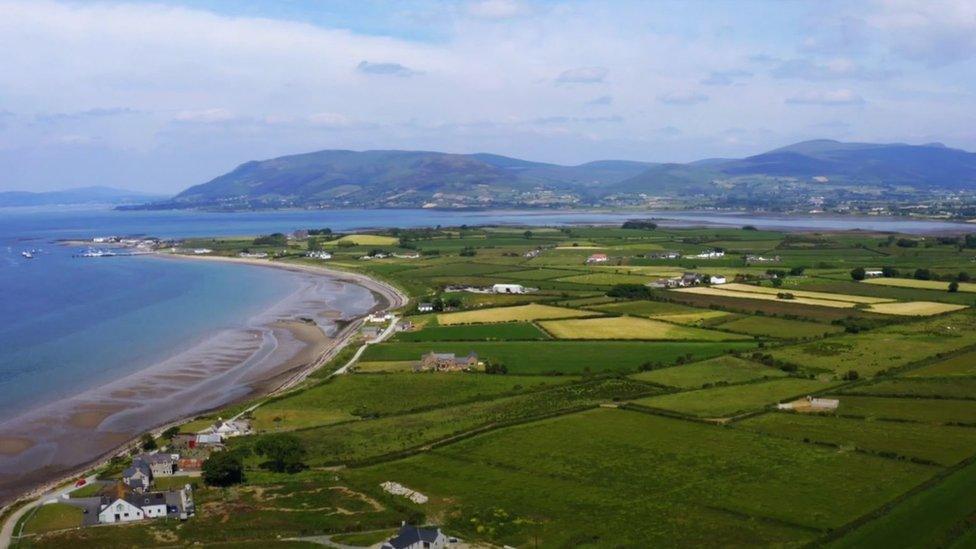Strangford Lough: Scheme to stimulate seagrass growth
- Published
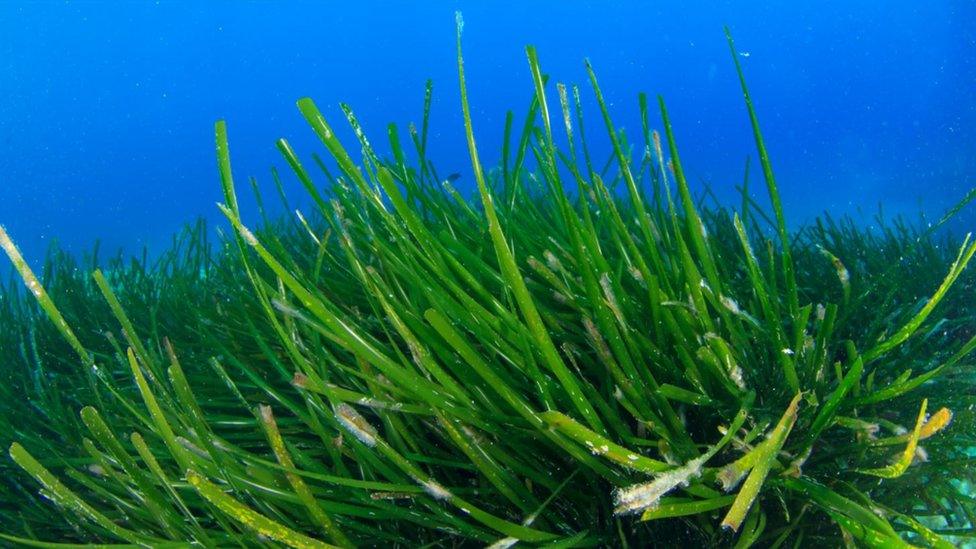
Seagrass is thought to be greater than trees at absorbing carbon
A pilot scheme on Strangford Lough is trying to stimulate the growth of seagrass on the seabed by testing alternative mooring systems.
Seagrass is a flowering plant able to live in seawater.
Its ability to absorb carbon is thought to be greater than that of trees.
According to Darren Rice of Newry, Mourne and Down District Council's geopark team, the traditional mooring system can scar the bottom of the seabed and get rid of the seagrass.
"We are currently surveying two new advanced mooring systems to see which ones are best for Strangford Lough," he said.
"So we are hoping these systems will lift the chain off the seabed and allow the seagrass to recover and that will allow all of the biodiversity to rush back in."

Darren Rice says that various alternatives are being explored to find the best fit for Strangford Lough
Mr Rice added: "There is a very simple one, where you put floats on a chain and that lifts it up.
"The other is like a big elastic band on the seabed and it stretches with the currents and the tide and the weather.
"It's a bit more expensive but it depends on Strangford Lough's conditions to see which it suits best."
This month a team of divers inspected some of the trial moorings just north of Portaferry as part of the inspection, among them was conservation officer Dr David Smyth.
"Beyond the chain of the mooring the seagrass is in pretty good shape," he said.
"It has a good root system and is well intact into the substrate.
"But where the chain has swung around the mooring block it is pretty scarred up."
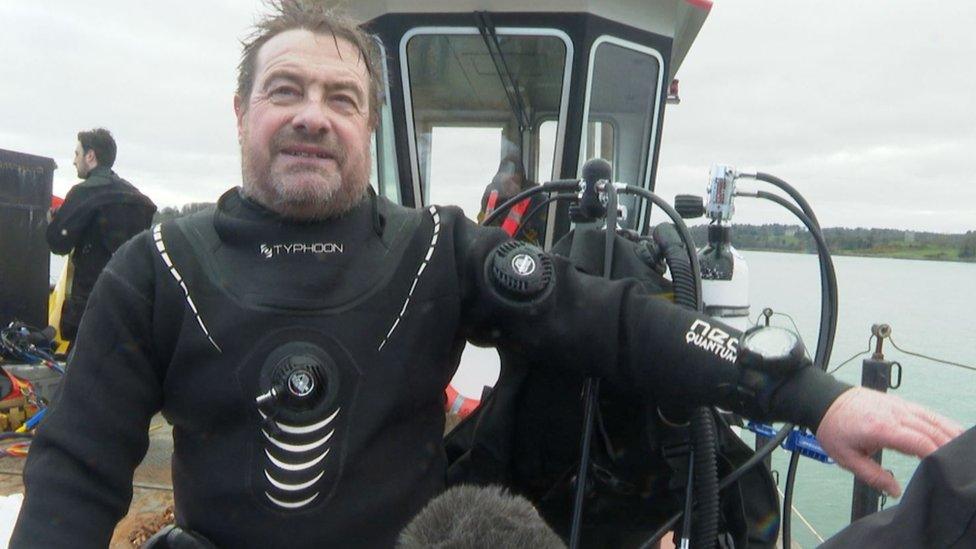
Dr David Smyth who inspected the area says each mooring ship is damaging around a 6m (19.7ft) circle of seabed
"One on its own isn't a particularly big problem, but if you have 10 to 15 of them you are taking out a six metre circle with the chain moving in the tide.
"That's removing that seagrass, that carbon capture plant that everybody is very excited about."
Across Strangford Lough there are mooring sites in dozens of locations.
Commercial diver Jonathan Connor was also among those inspecting the trial site.
"We were doing a marine inspection - looking at the chains, making sure they were OK," he said.
"We found out that there were a few pieces missing so we replaced that and carried on with the inspection.
"You have an objective to do when you are down there so most of the time your mind is focused on what the task is and not what is around you."
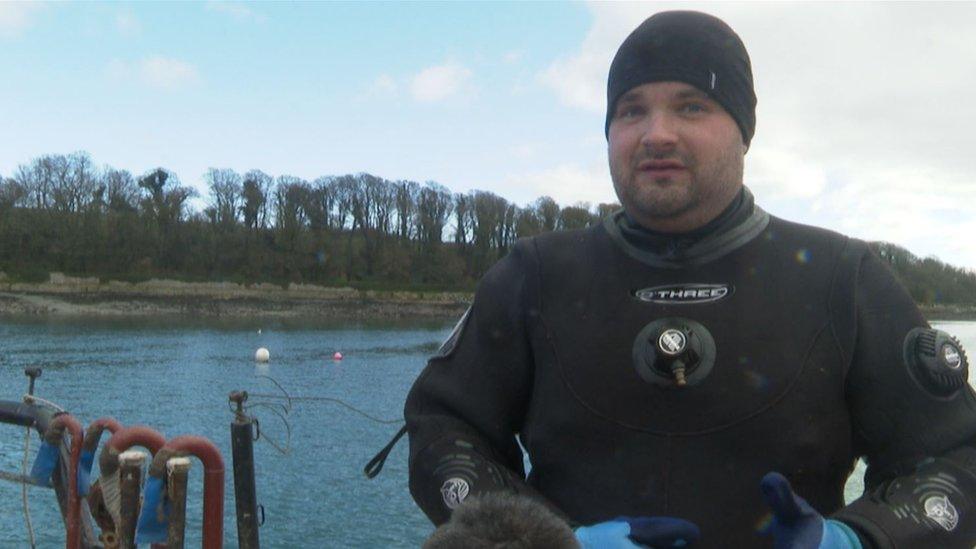
Jonathan Connor is a commercial diver
He added: "But from time to time it is nice to look around and take in the natural environment.
"Usually in Ireland it would be basking sharks or seals, they'd be the main ones we have around here.
"But you can see loads of wildlife down there - some looks friendly and some doesn't look too friendly."
This pilot scheme is expected to continue for a number of years with the aim of changing nothing above the water but stimulating life below.
Related topics
- Published4 September 2019
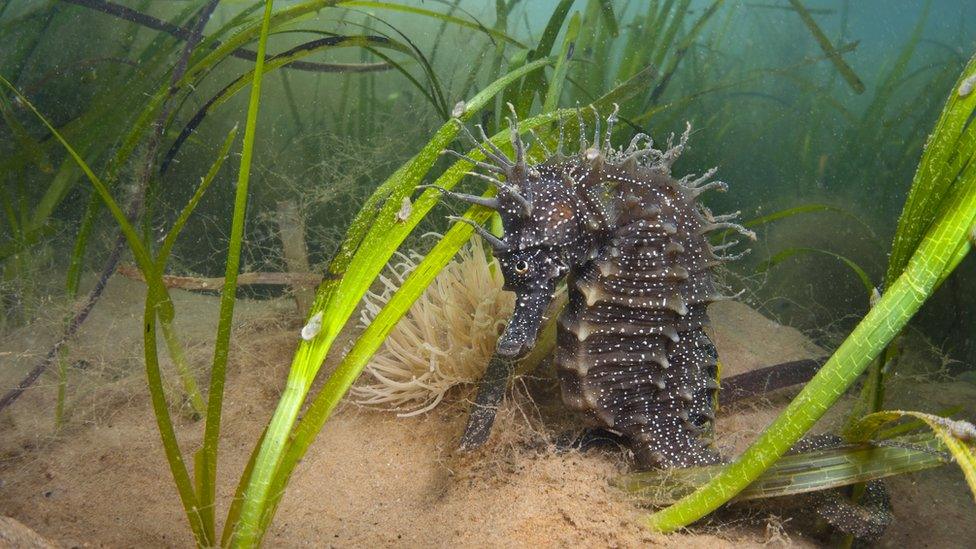
- Published8 June 2022
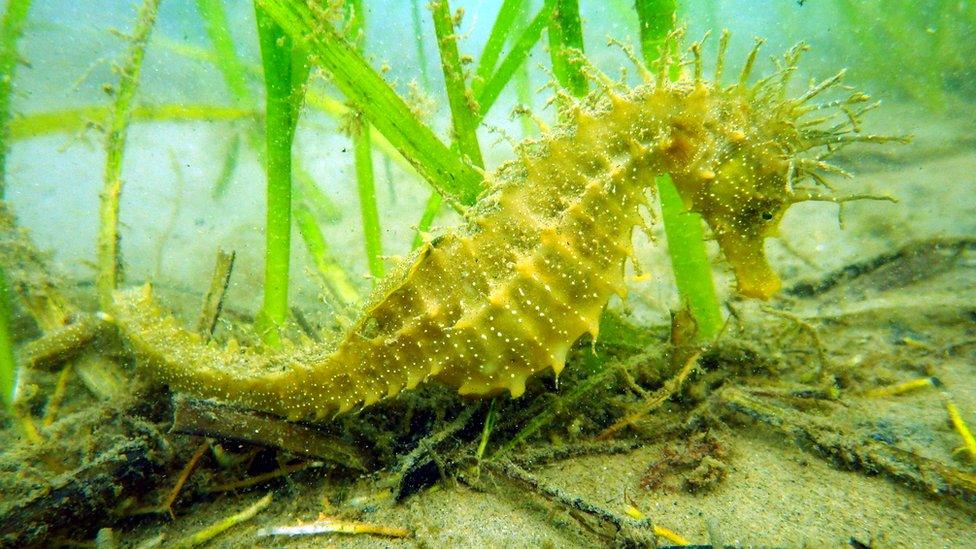
- Published13 December 2022
